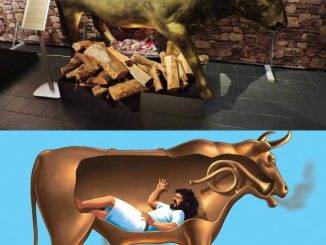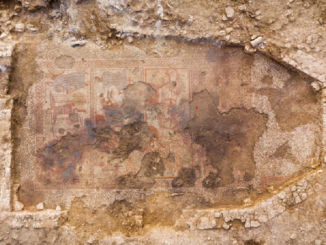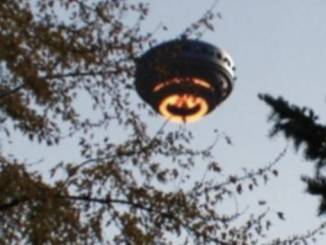In the ancient Greek epic poem the ‘Iliad’, once believed to be the story of myth and legend, Homer spoke of ten cities. Today, the names of those cities can be seen in towns and villages around Greece and archeology has already confirmed the real existence of a number of the cities including the mythical Troy. However, there is one city in with there is a curious lack of reference or knowledge anywhere in Greece – the ancient city of Lacedaemon.
Amazingly, archaeologists discover what they believed to be the city of Lacedaemon in 2007, but any and all attempts to excavate the incredible site which thankfully has been documented by photographs, has been blocked by the Greek government.
The ancient city of Lacedaemon, a city older than the famous Mycenae, has baffled historians and archaeologists for decades, since it is rarely spoken of and it appears its legacy had disappeared completely.
The name of the city was given by the king of Laconia, named after Lacedaemon, the son of god Zeus and the Pleiad Taygete. His son was king Amyclas of Sparta.
According to the legends, Lacedaemon can be found at the foothills of mount Taygetos (named after the name of Lacedaemon’s mother, the Pleiad Taygete). The area around Taygetos is an ancient one and according to ancient historian Pausanias, the first kings were settled there, all of them with direct origins from the Gods.
A few years ago, Dr Theodoros Spyropoulos, who was the manager of the government body responsible for archaeological excavations in Greece, and his team, managed to find archaeological evidence in the current city of Pellana which pointed to their discovery being the mythical city of Lacedaemon . The evidence included an ancient multi-level round royal tomb covered in solid stone, the largest in the world with artefacts, suggests that it may have been the royal tomb of the Greek King Menelaus responsible for the Trojan War, and of his wife Helen of Troy. Furthermore, gigantic human bones belonging to humans of a height between 2 and 2.5 meters were discovered.
In the surrounding area Cyclopean walls, royal building that was suggested to belong to King Menelaus, as well as many of artefacts were discovered, similar to those discovered in Mycenae, Troy and other cities of the Mycenaean Era.
Of particular significance was the discovery of ancient Greek writing dating back to an era in which it was not thought that ancient Greek writing existed. The implication of such a finding is that the Greek language could not have originated from the Phoenician language, as currently believed, but that the reverse would have to be true.
Such a discovery has the potential to completely change the history books and perhaps this is why, shortly after the discovery, the government authorities covered the tomb under layers of soiled, effectively burying all evidence of this ancient place.
At the time, the excuse given was that it was being covered to protect it until they would take up further excavations the following year. Well, that was 6 years ago and it appears clear that the government had no intention of resuming the excavations which would lead to an uncomfortable rewriting of history in which mythological events are proven to have really taken place.
Fortunately videos and evidence of the area exist proving that the excavations took place and documenting some of the findings. Dr Spyropoulos is a distinguished researcher and archaeologist and was one of the two archaeologists who discovered the well preserved ancient city of Akrotiri on the island of Santorini in 1967.
Why was such an important discovery hidden by the Greek government? What was it that made them so uncomfortable that they did not want to continue the excavations? The Ancient Origins team intends to find out and we will report back with further news in due course.



